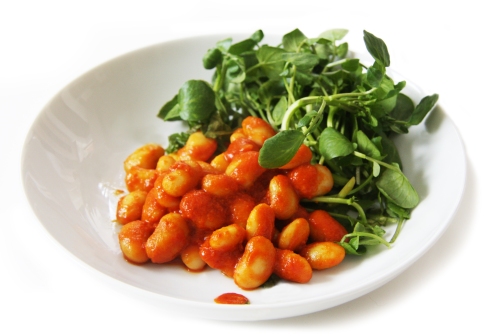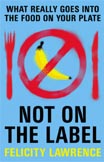The other day I overheard someone explaining to a lady who wished to get fit and lose weight that she should eat a diet that is 60% carbohydrates. If these carbohydrates include all root vegetables, fresh fruits and things like honey, dried fruits, preserves and sweetened foods like yoghurt, ready meals, processed meat etc., then maybe for someone working out regularly this could be nearer the truth. However, I know, because I have been talking to people for years about their eating habits, that this simply isn’t how people perceive carbohydrates.
My daughter informs me about what she is told at school:
Carbohydrates are bread, pasta, sugar, rice etc. Proteins and fats are: Meat, fish, eggs, dairy and nuts and seeds. Fruit and vegetables are: All fruits, vegetables, pulses. Fluids are water and other drinks.
Everything that schools teach and doctors tell you has some truth but is very misleading:
- Nearly all fruits and vegetable contain carbohydrates in the form of starches and sugars.
- Some fruits and vegetable contain fats
- Many vegetables contain protein.
- Some fruits contain protein.
- Dairy contains sugars, proteins and fats
- Whole grains have a high content of protein – some even have complete protein, meaning all essential amino acids.
- White refined products like pasta, rice or bread are basically sugar.
- Nearly all processed proteins (ready meals and cooked meats) contain sugar.
- Meats like sausages, burgers, pies etc can contain a lot of carbohydrates and sugars as well as fats.
Today’s Western diet can be complex due to the way it is made and presented, but ironically there is little variety. It is true that the Western diet is made up of around 17 foods (as opposed to the thousands of foods available in the world) and even then we choose just 3 foods to be our staple diet.
In all the years I have been studying, researching, practicing and eating, I am totally convinced that the way carbohydrates are consumed is one of the biggest health issues and even now a time bomb waiting to explode.
Everyone’s carbohydrate needs are different. Two friends or even siblings may have completely different needs: For example friend A has a higher metabolism because she was born that way or she is very active, or she may have less nutrient deficiencies (which can have an impact on metabolism) Friend B is smaller frame, less active, and maybe less muscle mass but more fat tissue. Friend B will have different carbohydrate needs than Friend A. She may also have different protein needs.
- If weight loss is required – Your carbohydrate intake has to be addressed.
- If blood sugar balancing is needed – Carbohydrates need to be addressed
- If your hormones need balancing – Carbohydrates need to be addressed
In fact all health issues need carbohydrate intake to be considered.
The ratio’s of Carbohydrates to other foods for a normal diet. If training you may need to amend this – but in general it is relative.
If you think of your plates/dish as a pie chart this would be a healthy guide to follow:
Breakfast
Carbohydrates 50% (Includes fruits, grains and sugars)
Proteins: 35% (Includes milk, grains, eggs, meats, nuts and seeds)
Fats: 15% (Includes fish oil, flax oil, butter, coconut butter, nuts, seeds, yoghurt, fats from meats)
Lunch
Carbohydrates 25% (Grains, sugars)
Vegetables: 30% (Root veg are high in carbs so can be treated as carbohydrates – greens and other veg apply)
Proteins: 35% (Meat, fish, pulses, nuts, seeds, eggs)
Fats: 10%: Olive oil, oily fish, butter and other fats
Dinner
Carbohydrates 5-10% (Grains, sugars)
Vegetables:40%
Proteins: 45%
Fats: 10%
Importance of slow release carbohydrates: Foods which release glucose slowly into our bloodstream avoids sudden blood sugar highs then lows therefore keeps energy levels, moods, and hunger in balance. There is a lot of information on the internet about low GI foods and plenty of books which can be very helpful. A lot of the time it is common sense, if a grain is refined (white) or a food is sweet (even healthy carrot juice) it will be released into the blood quickly causing a blood sugar spike.
The rate at which carbohydrates affect our blood glucose levels are determined by the following factors:
Refined carbohydrates
These have been processed so that they produce a fine texture. The starch grains are partially broken down, increasing their surface area and the fibrous layer has been removed. This reduces the work of the digestive enzymes and gives them a greater area to act on in order to obtain the simple glucose molecules. Therefore refined carbohydrates release glucose quickly into the blood stream giving a sharp rise in blood glucose.
Wholegrain unrefined carbohydrates have not been processed, therefore their starch grains are still intact. It takes longer for our digestive enzymes to break it down, as there has been no help with the digestive process, therefore glucose is released into the blood stream at a slower rate.
When Can Fast Release Carbohydrates can be consumed?
After Exercise and sometimes during prolonged exercise: After training the glycogen levels in the muscles must be quickly replenished to avoid the break down of protein from the muscles for energy. Foods, which cause a rapid increase of blood glucose levels, should be consumed as soon as training ends. There are healthier fast release carbohydrates compared to energy drinks and sports bars, which are full of refined sugar. Carrot juice, white potatoes, ripe bananas and rice cakes all provide fast release sugar.
Slow Release Carbohydrates: Oats, basmati brown rice, brown rice, wild rice, whole grain spelt and other whole grains, apples (especially  eaten with a few nuts or seeds), pears, blueberries, strawberries and other whole fruits, nuts, beans and pulses.
eaten with a few nuts or seeds), pears, blueberries, strawberries and other whole fruits, nuts, beans and pulses.
Cooked carbohydrates
Reducing cooking time for vegetables and grains means they will release their sugars more slowly, so rice should be slightly hard and pasta should not be too soft.
Natural Fast Release Carbohydrates: Sweet potato, pumpkin, parsnips, carrots, dried fruit, sugar, honey, watermelon, fruit juices.
Fibre –Whole grains are high in fibre as well as beans and pulses; this slows the rate at which the food is digested slowing the release of glucose into the bloodstream. The fibre pectin found in apples slows the release of glucose into the bloodstream, however when this is removed through juicing, the apple juice releases glucose quickly into the blood stream.
Presence of Fats, Protein or Acid
The combination of fat, protein or acid with carbohydrates can slow release of glucose into the bloodstream as it increases the transit time of food in the stomach.
Stimulants: such as coffee, tea, cola drinks and cigarettes affect blood sugar, as they stimulate a ‘fight or flight’ response, causing a sudden surge of glucose to be released from stores into the blood, ready for use by the muscles and brain. When the blood glucose is unused, insulin must be released to stabilise the blood glucose, this causes a blood sugar low.
Reduce your carbohydrate intake and look after your blood sugar – you will automatically have more energy and less health risk now and in the future.
Read Full Post »





















